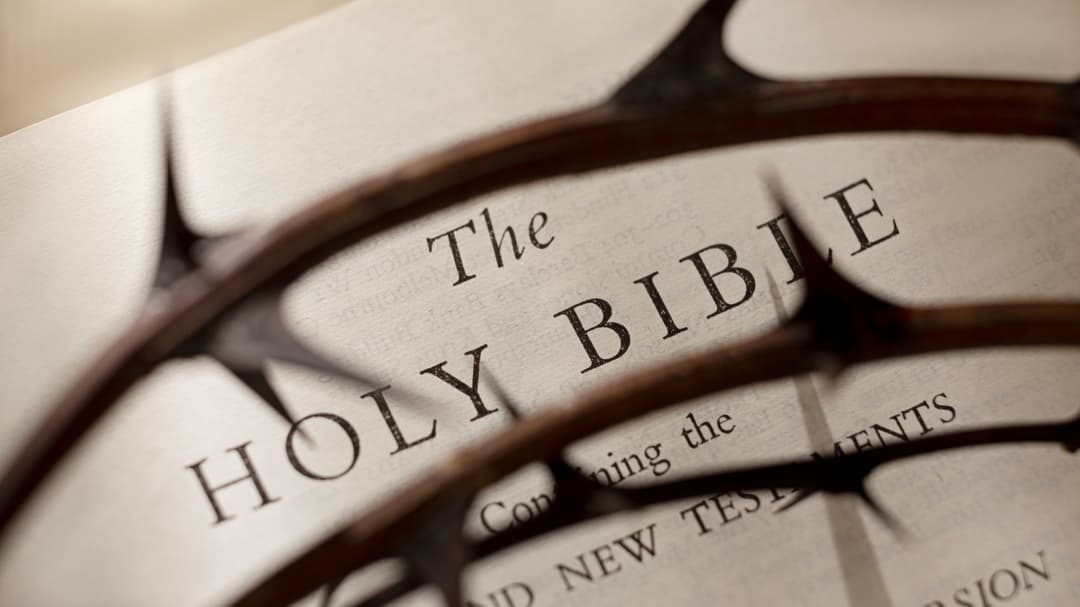The Celtic Cross' Historical Origins
The earliest references to the Celtic Cross can be found in medieval manuscripts and stone carvings dating back to the 7th century. These sources provide valuable insights into the cross's design and use. Archaeological findings, including high crosses in Ireland, suggest that the Celtic Cross was both a religious and a cultural marker, often placed at important sites such as monastic centers and crossroads.
The Celtic Cross is predominantly found in Ireland, Scotland, and Wales, with the highest concentration in Ireland. These regions were key centers of early Christian activity, and the cross's presence there reflects the spread of Christianity and its integration with local traditions. Notable examples include the high crosses at Clonmacnoise in Ireland and Iona in Scotland.
The design of the Celtic Cross likely draws from both pagan and Christian influences. The ring, or nimbus, is thought to represent the sun or the moon, indicating a link to earlier, nature-based religions. As Christianity spread through the Celtic lands, missionaries might have adopted and adapted these pre-existing Celtic symbols to make the new faith more familiar and acceptable to the local population.
The Celtic Cross began to appear around the 7th century, during significant cultural and religious transformation in the British Isles. Initially, it served as a symbol of the Christian faith and a marker of monastic sites.
Over the centuries, its design evolved, incorporating intricate knotwork and biblical scenes, reflecting the growing sophistication of Celtic art. By the 10th century, the Celtic Cross had become a dominant feature of the landscape, symbolizing both faith and cultural identity.
The Celtic Cross Symbolism and Design
The Celtic Cross is distinguished by some key features. It typically consists of a long vertical shaft intersected by a horizontal crossbeam, forming the arms of the cross. At the intersection of the arms and the shaft is a circular ring, one of its most recognizable elements. The base of the cross is often broader and sometimes features intricate carvings or inscriptions.
- Ring (Nimbus): The circular ring encircling the intersection of the arms is believed to symbolize eternity and the infinite nature of God's love.
- Shaft and Arms: The shaft and arms are often elaborately decorated with Celtic knotwork, interlacing patterns, and biblical scenes, which serve both an ornamental and didactic purpose.
- Base: The base of the cross can vary in design, sometimes featuring additional carvings that depict local flora, fauna, or historical events
The symbolism of the Celtic Cross is multifaceted, encompassing religious, astronomical, and cultural meanings. The cross is a powerful symbol of Christianity, representing the crucifixion and resurrection of Jesus Christ. The ring is often interpreted as a halo or a symbol of the heavenly realm.
Some scholars suggest that the ring might symbolize the sun, indicating a connection to ancient sun worship practices, which were later incorporated into Christian symbolism. The intricate knotwork and patterns are symbolic of the interconnectedness of life and the eternal cycle of existence. They reflect the Celtic appreciation for nature and the cosmos, which is another theme that scholars tie to the cross.
The design of the Celtic Cross also varies across different regions, reflecting local styles and influences. In Ireland, crosses often feature more intricate knotwork and biblical scenes, while in Scotland, simpler designs with geometric patterns are more common.
The designs also vary by period. Early crosses (7th-9th centuries) tend to be more simplistic, while later examples (10th-12th centuries) show elaborate carvings and detailed iconography. However, despite these differences, the Celtic Cross can be compared with other similar Irish symbols to understand its unique features and influences.
One example is the high cross, a monumental stone cross found throughout the British Isles. It often shares design and purpose similarities with the Celtic Cross, but high crosses are generally larger and more elaborately decorated.
Another example is the ringed cross. Ringed crosses from other cultures, such as the Anglo-Saxon and Viking traditions, also feature a circular ring. These crosses often blend local artistic traditions and Christian symbolism, indicating a broader pattern of cultural integration and adaptation.
Get Closer to God Today
4.9
Average Rating
|Over 5 Million Downloads
Religious Significance Behind The Cross
The Celtic Cross played a significant role in the spread of Christianity across the British Isles. Early Christian missionaries, such as St. Patrick in Ireland, used the cross as a tool for evangelization. The cross was often erected at important religious and social sites, serving as a visual reminder of the Christian presence and its message.
The Celtic Cross was not only a religious symbol but also became deeply embedded in local traditions and folklore. The cross was associated with various legends and myths in many Celtic societies. For example, it was often believed to have protective powers, guarding against evil spirits and natural disasters. Over time, the cross was incorporated into local customs and practices, such as marking the boundaries of sacred spaces or being used in seasonal festivals.
Source: Created with Midjourney
Theological Interpretations and Their Evolution Over Time
The theological significance of the Celtic Cross has evolved over time. Initially, it was seen as a symbol of the triumph of Christianity over paganism, representing the light of Christ dispelling the darkness of the old beliefs. The ring, or nimbus, was interpreted as a symbol of eternity and the divine nature of Christ.
In the medieval period, the cross took on additional layers of meaning. It became a symbol of the unity of the Trinity, with the vertical and horizontal lines representing the divine and human natures of Christ. The intricate knotwork and interlacing patterns were seen as symbols of the interconnectedness of all creation and the eternal nature of God's love.
In modern times, the Celtic Cross has come to symbolize not only religious faith but also cultural identity and heritage. It is used by various groups to express their connection to Celtic history and traditions, serving as a powerful emblem of continuity and resilience.
The Celtic Cross: Relevance and Debates Today
The Celtic Cross continues to be a powerful and recognizable symbol in contemporary culture. It appears in various forms, from jewelry and tattoos to public monuments and logos. In modern times, the Celtic Cross is used both in religious practices and secular contexts. Within the Christian community, it also remains a potent symbol of faith.
Many churches, particularly in Ireland, Scotland, and Wales, continue to use the cross in their architecture and liturgical items. The cross is also commonly used in grave markers and memorials, symbolizing eternal life and the hope of resurrection.
When it comes to its origin, scholars are still in debate. Some argue that the cross has primarily Christian origins, created by early missionaries to symbolize the spread of Christianity in the Celtic lands. Others suggest that the design incorporates pre-Christian, pagan symbols, such as the sun or moon, which were adapted by Christian missionaries to ease the transition for converts.
Another viewpoint posits that the cross's ring represents a fusion of Christian and pagan elements, symbolizing the eternal nature of God and the universe. The cross is seen as a syncretic symbol, blending various religious traditions and iconographies.
Recent archaeological and art historical research has provided new insights into the Celtic Cross. Advanced imaging techniques and digital modeling have allowed for a more detailed analysis of the intricate carvings and inscriptions on these crosses, revealing previously unnoticed details and patterns. Studies of specific high crosses, such as those at Clonmacnoise and Monasterboice, have shed light on their construction methods and the workshops that produced them.
Another ongoing debate involves the interpretation of the cross's decorative elements. While the knotwork and interlacing patterns are generally understood to symbolize eternity and interconnectedness, their specific meanings and origins are still contested. Some scholars argue that these patterns have distinct regional variations that reflect local cultural influences, while others see them as part of a broader pan-Celtic artistic tradition.
Source: Created with Midjourney
FAQ Celtic Cross
Is the Celtic Cross a Catholic Cross?
The Celtic Cross is not exclusively a Catholic cross. While it is prominently associated with early Christian missionaries in the Celtic regions, which were predominantly Catholic, it has been embraced by various Christian denominations. Its use and significance transcend any single branch of Christianity, symbolizing broader themes of faith, eternity, and salvation.
Is the Celtic Cross a Gothic Cross?
No, the Celtic Cross is not a Gothic cross. The Celtic Cross originated in the early medieval period, particularly in the 7th century, and is characterized by its distinctive ring around the intersection of the cross. Gothic crosses, on the other hand, emerged later, during the Gothic period (12th to 16th centuries), and are typically more elaborate, often found in Gothic architecture and art.
Is the Celtic Cross a Viking Cross?
The Celtic Cross is not a Viking cross, although there are some similarities. The Vikings did interact with Celtic cultures, and some cross designs may reflect a blend of influences. However, the Celtic Cross is specifically rooted in Celtic Christian traditions and is distinguished by its unique ring feature and intricate knotwork.
Is the Celtic Cross a Pagan Cross?
The Celtic Cross has elements that may reflect pre-Christian, pagan symbols, such as the ring potentially representing the sun or moon. However, it is primarily a Christian symbol. Early Christian missionaries may have incorporated these pagan elements to make Christianity more accessible to the local populations.
Is the Celtic Cross a Gaelic Cross?
Yes, the Celtic Cross can be considered a Gaelic cross. "Gaelic" refers to the Celtic cultures of Ireland, Scotland, and the Isle of Man, where the Celtic Cross is most prevalent. It is deeply connected to the Gaelic-speaking peoples and their Christian heritage.
Is the Celtic Cross a Solar Cross?
The Celtic Cross is sometimes thought to incorporate elements of a solar cross, especially with its circular ring, which can symbolize the sun. This interpretation suggests a blending of Christian and ancient Celtic sun worship symbols. However, its primary significance is as a Christian symbol.
What Does the Cross Symbolize?
The cross is a powerful symbol in Christianity, representing the crucifixion and resurrection of Jesus Christ. It symbolizes salvation, sacrifice, and the promise of eternal life. The Celtic Cross, with its added ring, also symbolizes eternity and the infinite nature of God's love.
What Does the Iron Cross Mean?
The Iron Cross is a distinct symbol primarily associated with Germany. Originally a military decoration established in the 19th century, it has been used as a symbol of valor and bravery in the German armed forces. It is not related to the Celtic Cross and carries different historical and cultural connotations.
What is the Spiritual Meaning of the Cross?
The spiritual meaning of the cross in Christianity centers on the concepts of sacrifice, redemption, and the promise of eternal life. It is a reminder of Jesus Christ's suffering and crucifixion, as well as His victory over death and sin through His resurrection.
Why is the Cross the Symbol of Christianity?
The cross is the symbol of Christianity because it represents the crucifixion of Jesus Christ, which is a central event in Christian theology. It signifies Christ's sacrifice for humanity's sins and His resurrection, which is the foundation of Christian faith and hope for eternal life.
What Does it Mean When a Cross Appears?
When a cross appears, it is generally seen as a symbol of faith, hope, and divine protection in Christianity. It can also signify the presence of Christ and His salvation. The appearance of a cross in dreams or visions is often interpreted as a spiritual sign, conveying messages of guidance, reassurance, or a call to faith.












